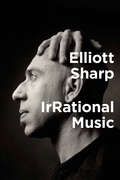- Table View
- List View
Italian Birds of Passage
by Simona FrascaMore than any other regional repertoire, Neapolitan song defined the Italian popular music tradition. From international celebrities like Enrico Caruso to the most middling small-town vedette, Neapolitan musicians transcended local identity and attracted new audiences by abandoning the operatic tendencies of Italian song, introducing new subjects, and embracing new musical trends like the foxtrot, blues, and tango. In this way, they helped to create one of the first modern examples of a truly transnational musical style. This lively history spans the years from Italian unification to the fascist regime of the early twentieth century to trace the transformation of songs written in regional dialect into a wildly popular art form recognized around the world. As author Simona Frasca shows, the Neapolitan song tradition benefited from serendipitous historical circumstances: although they were forced to join the mass migration of Italians to New York and other American urban centres between 1880 and 1920, Neapolitan musicians managed to maintain strong ties with the art form's origins in Italy. By marrying a strong sense of tradition with an openness to new forms, these musicians helped to present a distinct form of 'Italianness' to the world even as they participated, along with other ethnic groups, to the production of 'American' identity.
It Ain't No Sin to Be Glad You're Alive: The Promise of Bruce Springsteen
by Eric AltermanThis highly praised celebration of Springsteen's artistry & influence is the most perceptive portrait yet of the remarkably gifted musician who, since the media anointed him "the future of rock 'n' roll" in the mid-1970s, has redefined the image of the rock star & emerged an authentic American hero -- a man to whom millions of loyal fans look as a voice for their yearnings, hopes, fears, & dreams. "Part biography, part lyrical deconstruction, & part fan letter, Alterman's book locates the singer-songwriter's strength in his ability to connect the small struggles of the common man with the broad political & social forces that engulf us, & to do so with a human touch." --Time. "It Ain't No Sin to be Glad You're Alive celebrates Springsteen's enduring legacy & reaffirms his position as a recording artist & performer who personifies America in the same way that Woody Guthrie, Walt Whitman, John Steinbeck, & Bob Dylan have in their work." --Cleveland Plain Dealer. "Fascinating, well researched, & serious: three qualities not often found together in biographies of musicians. It Ain't No Sin to be Glad You're Alive ranks with Peter Guralnick's work & is an essential document in evaluating Springsteen's legacy." --Rosanne Cash.
Issues in African American Music: Power, Gender, Race, Representation
by Portia K. Maultsby Mellonee V. BurnimIssues in African American Music: Power, Gender, Race, Representation is a collection of twenty-one essays by leading scholars, surveying vital themes in the history of African American music. Bringing together the viewpoints of ethnomusicologists, historians, and performers, these essays cover topics including the music industry, women and gender, and music as resistance, and explore the stories of music creators and their communities. Revised and expanded to reflect the latest scholarship, with six all-new essays, this book both complements the previously published volume African American Music: An Introduction and stands on its own. Each chapter features a discography of recommended listening for further study. From the antebellum period to the present, and from classical music to hip hop, this wide-ranging volume provides a nuanced introduction for students and anyone seeking to understand the history, social context, and cultural impact of African American music.
Isolde Ahlgrimm, Vienna and the Early Music Revival
by Peter WatchornIsolde Ahlgrimm (1914-1995) was an important pioneer in the revival of Baroque and Classical keyboard instruments in her native city, Vienna, and later, throughout Europe and the United States. She trained as a pianist at the Musikakademie in Vienna under the instruction of Viktor Ebenstein, Emil von Sauer and Franz Schmidt. In 1934 she met the musical instrument collector, Dr Erich Fiala, whom she married in 1938. His activities opened up the world of early instruments to her. Using a 1790 fortepiano by Michael Rosenberger, Isolde Ahlgrimm began her career as a specialist on early keyboard instruments with the first in her notable series of Concerte fur Kenner und Liebhaber, given in Vienna's Palais Palffy in February 1937. Ahlgrimm's career as a harpsichordist also began in 1937, when a new instrument was commissioned from the Ammer brothers in Eisenberg, Germany. In 1943 Ahlgrimm performed her first all-harpsichord programme, which consisted of the Goldberg Variations by J.S. Bach. From 1949 to 1956, she devoted herself to performing and recording nearly all of Bach's harpsichord music for the newly-founded Dutch label, Philips, presenting her new approach to the harpsichord to a wider audience. Ahlgrimm's performances of Baroque music represented a radical departure from the distinctly twentieth-century interpretations by the much more famous Wanda Landowska and her followers. Most obviously, Ahlgrimm's harpsichord performances eliminated frequent registration changes (her instrument had hand stops rather than pedals to change registers), and largely eschewed the massive ritardandi and other anachronistic performance practices that were hallmarks of Landowska's essentially Romantic style. Ahlgrimm researched and emphasized rhetorical traditions on which the music was based. This became more pronounced throughout the course of her later performing, writing and teaching career, and it was the beginning of an approach to the performance of eighteenth-century musi
Isn't Her Grace Amazing!: The Women Who Changed Gospel Music
by Cheryl WillsA unique tribute to often overlooked women who have left an indelible mark on Gospel Music—powerful talents who overcame racism and sexism to define the genre, establish its sound, and set the standard for good sangin’ for generations.Nothing in the world soothes the soul better than Gospel music. From the foot-stomping, hand-clapping melodies of yesterday to the head-bobbing, bass-thumping hits of today, Gospel music ignites the spirit and delivers the inspiration that takes us from the rough side of the mountain to the peak of God’s love and grace. That feeling of joy, peace, love, and contentment is amplified when it’s ringing through the voice of a sister who can SANG, Cheryl Wills reminds us. The remedy for a tough day at work can be alleviated with Mary Mary’s uplifting jam Shackles, the answer to your heart’s desires can be found in the harmonies of The Clark Sisters Name It, Claim It, and if you need a reminder of God’s love, there is nothing more timeless that Aretha Franklin’s stirring rendition of Amazing Grace.Some talented performers, like Sister Rosetta Tharpe have faded from history, while singers like Yolanda Adams are at the top of her game. During the twentieth century, Willie Mae Ford spent most of her life encouraging and uplifting Christians both in church and on stage and composed more than 100 Gospel songs, yet it was men like her co-writer, Thomas A. Dorsey, who received the accolades and fame. Many women in the Gospel music industry go unnoticed, unpaid, and under-appreciated for their contributions, yet it is these women who are often the bedrock for songwriting, arranging, directing, and developing singers. Cheryl Wills, the granddaughter of a Gospel singer, at last shines a spotlight on these spectacular women of song. The only book of its kind, Isn’t Her Grace Amazing! showcase the talents, gifts, and skills of women in the Gospel music industry. It celebrates these heroines, chronicles their journeys from the choir loft to the world’s largest stages, and reveals how they revolutionized this sacred music that is beloved worldwide. From the matriarchs of this movement to today’s chart-topping divas, Wills offers in-depth portraits of twenty-five amazing women of Gospel music—based on interviews and extensive research—behind-the-scenes stories of favorite gospel hits, and illuminates what makes each of them shine.
The Islander: My Life in Music and Beyond
by Chris BlackwellIn the vein of Sound Man and The Soundtrack of My Life, a lyrical, warmhearted, and inspirational memoir from the founder of Island Records about his astonishing life and career helping to bring reggae music to the world stage and working with Bob Marley, U2, Grace Jones, Cat Stevens, and many other icons. Chris Blackwell, like the paradigm-shifting artists he came to support over his sixty-plus years in the music business, never took the conventional route. He grew up between Jamaica and London, crossing paths with Ian Fleming, Noel Coward, and Errol Flynn. After being expelled from an elite British school for rebellious behavior in 1954 at age seventeen, he moved back to Jamaica, and within five years, founded Island Records—the company that would make an indelible mark on music, shifting with the times, but always keeping its core identity intact. The Islander is the story of Blackwell and his cohorts at Island Records, who time and again, identified, nurtured, and broke out musicians who had been overlooked by bigger record labels, including Steve Winwood, Nick Drake, John Martyn, and Cat Stevens. After an impromptu meeting with Bob Marley and his bandmates in 1972, Blackwell decided to fund and produce their groundbreaking album Catch a Fire. He&’d go on to work with Marley over the rest of his career, remain his close friend, and continually champion Jamaican culture and reggae music. In the ensuing years, Blackwell worked with U2, Grace Jones, the B-52s, Tom Waits, Robert Palmer, Tom Tom Club, and many other groundbreaking artists. He also opened the first Jamaican boutique hotel, on the property of Ian Fleming&’s former home, Goldeneye, where all the James Bond books were written. Blackwell is a legendary as well as deeply humble raconteur, and reading The Islander is like spending a day with the most interesting man in the world.
Island Gospel: Pentecostal Music and Identity in Jamaica and the United States (African American Music in Global Perspec #3)
by Melvin L. ButlerPentecostals throughout Jamaica and the Jamaican diaspora use music to declare what they believe and where they stand in relation to religious and cultural outsiders. Yet the inclusion of secular music forms like ska, reggae, and dancehall complicated music's place in social and ritual practice, challenging Jamaican Pentecostals to reconcile their religious and cultural identities. Melvin Butler journeys into this crossing of boundaries and its impact on Jamaican congregations and the music they make. Using the concept of flow, Butler's ethnography evokes both the experience of Spirit-influenced performance and the transmigrations that fuel the controversial sharing of musical and ritual resources between Jamaica and the United States. Highlighting constructions of religious and cultural identity, Butler illuminates music's vital place in how the devout regulate spiritual and cultural flow while striving to maintain both the sanctity and fluidity of their evolving tradition.Insightful and original, Island Gospel tells the many stories of how music and religious experience unite to create a sense of belonging among Jamaican people of faith.
Islamey and Other Favorite Russian Piano Works (Dover Classical Piano Music)
by Rubinstein Balakirev Glinka And Others Anton ArenskyInspired by the richness of Eastern folk music, Mily Balakirev composed the oriental fantasy Islamey in 1869. Based on themes from Armenia and the Caucasus region, this scintillating work is known worldwide as a supreme example of virtuoso piano writing at its best.Other favorite Russian piano works featured in this exceptional compilation include music by Arensky, Borodin, Glinka, Rimsky-Korsakov, and other masters. Among them are such all-time favorites as Rubinstein's lovely "Melody in F," Prokofiev's blazing Toccata, Scriabin's famous Nocturne for Left Hand Alone, Rachmaninoff's Prelude in C Sharp Minor, Stravinsky's "Piano-Rag-music," and many more.Aimed at intermediate- to advanced-level pianists, this handsome volume features an introduction by internationally acclaimed pianist Joseph Banowetz, a specialist in Russian piano music.
Islam, State, and Modernity
by Zaid Eyadat Francesca M. Corrao Mohammed HashasThis book offers the first comprehensive introduction to one of the most significant Arab thinkers of the late 20th century and the early 21st century: the Moroccan philosopher and social theorist Mohammed Abed al-Jabri. With his intellectual and political engagement, al-Jabri has influenced the development of a modern reading of the Islamic tradition in the broad Arab-Islamic world and has been, in recent years, subject to an increasing interest among Muslims and non-Muslim scholars, social activists and lay men. The contributors to this volume read al-Jabri with reference to prominent past Arab-Muslim scholars, such as Ibn Rushd, al-Ghazali, al-Shatibi, and Ibn Khaldun, as well as contemporary Arab philosophers, like Hassan Hanafi, Abdellah Laroui, George Tarabishi, Taha Abderrahmane; they engage with various aspects of his intellectual project, and trace his influence in non-Arab-Islamic lands, like Indonesia, as well. His analysis of Arab thought since the 1970s as a harbinger analysis of the ongoing "Arab Spring uprising" remains relevant for today's political challenges in the region.
Isaac Vossius's De poematum cantu et viribus rhythmi, 1673: On the Music of Poetry and Power of Rhythm (Music Theory in Britain, 1500–1700: Critical Editions)
by Peter MartensDr Peter Martens provides the first complete edited English translation of, and commentary on, Issac Vossius’s De poematum cantu et viribus rythmi, a late seventeenth-century work of Continental musical humanism, all the more interesting for being published in England and dedicated to royalist Henry Bennett, Duke of Arlington. This treatise plays an important but poorly understood role in the continued development of rhythmopoeia; Vossius continues the arguments of figures such as Vincenzo Galilei and Marin Mersenne - desiring to link linguistic rhythm, music, and the passions - by proposing a practical, if undemonstrated, method for doing so based on ancient poetic feet. This resuscitation of poetic feet in the service of affect is made explicit by Vossius, but is undoubtedly more familiar to musicologists from Wolfgang Caspar Printz's 1696 Phrynis Mitilenaeus or Johann Mattheson's 1739 Der vollkommene Capellmeister. Vossius, or more correctly, De poematum cantu, was often cited during the century after its publication, and no modern treatment of rhythmopoeia seems complete without a citation or short excerpt from this work. There is little secondary literature that focuses on this treatise, but what does exist links this work directly to John Dryden's composition of his 1687 and 1697 St. Cecilia odes, and their musical settings by Giovanni Battista Draghi and Jeremiah Clarke, respectively. In Dean Mace and H. Neville Davies' debate over the extent of Vossius's influence on these works can be found a rich picture of the contentious issues surrounding text-setting and musical affect that so occupied a great many writers in late-seventeenth-century England. A full translation and accompanying discussion of Vossius's own sources and musical influences allows English-language students and scholars to access and study this work in the depth and to the degree it deserves.
Isaac Albeniz: A Research and Information Guide (Routledge Music Bibliographies)
by Walter Aaron ClarkIsaac Albéniz is one of the most important figures in the history of Spanish music. A legendary child prodigy, he went on to become one of the leading concert pianists of his generation in Europe. However, he aspired to compose music rooted in the folklore of his native Spain, contributing seminal masterpieces that defined the sound of Spanish art music in the 20th century and served as an inspiration to his most eminent successors. This annotated bibliography and research guide provides an up-to-date and thorough presentation of all the sources any aficionado, performer, or scholar would need to deepen his or her understanding of this fascinating pianist and composer.
Is Tiny Dancer Really Elton’s Little John? Music's Most Enduring Mysteries, Myths, and Rumors Revealed
by Gavin EdwardsSex, Drugs, Rock 'n' Roll, and ... Ham Sandwiches? If you are a music fan, you may be aware of some of music's most enduring mysteries. Where did Pearl Jam get their name? Are the White Stripes related by blood or by marriage? Did Mama Cass really die from choking on a ham sandwich? Gavin Edwards has heard just about every strange question, racy rumor, and legend of the music world. As the writer of Rolling Stone's "Rolling Stone Knows" column, Edwards proved himself as a one-man encyclopedia of music trivia. Now he shares all of his knowledge with you. Look inside to find the answers to these questions and more: *What's the connection between The Beach Boys and Charles Manson? *How did Dr. Dre and Eminem meet? *Did Mick Jagger and David Bowie really sleep together? *What's the deal with Led Zeppelin and the shark? *What's the feud between The Smashing Pumpkins and Pavement all about? *Was Elton John's "Tiny Dancer" really written about his most private body part? Is Tiny Dancer Really Elton's Little John? might not tell you who shot Tupac or why Celine Dion is still allowed to make records, but with thorough research and answers straight from the mouths of the performers themselves, Edwards will help you become a music geek extraordinaire.
Is This the Real Life?: The Untold Story of Queen
by Mark BlakeQueen are unique among the great rock bands. It is nearly twenty years since frontman Freddie Mercury's death brought the band to an end - yet their fanbase remains massive. They appeal equally to men and women. Their fans are just as likely to be teenagers too young to have been born when the band were still touring and making records (thanks not least to the huge success of the musical We Will Rock You). And their musical history is one of constant reinvention - from heavy metal and prog rock to disco pop, stadium anthems and even jazz influences. Now, Mark Blake, the experienced Mojo journalist who wrote Aurum's bestselling book on Pink Floyd, has written the definitive history. Having already interviewed the surviving band members over the years, he has now tracked down dozens and dozens of new interviewees, from Queen's first long-forgotten bass players to Freddie Mercury's schoolmates in Isleworth, Middlesex, to trace Queen's long career from their very first gawky performances in St Helens, Merseyside through their sensational stage-stealing appearance on Live Aid to the band's collaboration with Paul Rodgers at the beginning of the century. Full of fascinating new revelations - especially about the improbable transformation of a shy Indian schoolboy called Bulsara into the outrageous-living hedonist that was Freddie Mercury - this is a book every Queen fan will want to have.
Is This Love (Marley)
by Bob Marley Cedella MarleyRelive the magic of Bob Marley's most beloved songs in this newest picture book adaptation!Is this love?Is this love that I'm feeling?Bob Marley's music has captured the hearts and souls of families around the world. This sweet adaptation of one of his best loved songs is a heartwarming tale of an older child's love for a younger sibling.From the moment she sees her baby sister, big sister knows just what she's going to do: love her and treat her right, every day and every night. Playing together, watching over her, standing by her through thick and thin . . . big sister does it all, because yes, this is love that she's feeling.Adapted by Cedella Marley, Bob Marley's eldest child, and exuberantly illustrated by Alea Marley, Is This Love is a joyful ode to the unshakeable love shared by all those who call one another family.BOB MARLEY FANS: This new addition to the series based on the lyrics of famed reggae musician Bob Marley introduces his music and ideals to the youngest of readers, while inspiring nostalgia in older ones.GREAT READ ALOUD: The musical refrains make for fun and predictable read-alouds at story time and bedtime.SIBLING LOVE: Warm and lyrical, this book is a familiar ode to the unbreakable and enduring bond between sisters, making it a perfect gift to welcome a new family member or celebrate important milestones.SWEET MESSAGE FOR FAMILIES: Imaginative and vibrant, parents and caregivers will appreciate the endearing message of this picture book, recognizing that love comes in all forms and the importance of treasuring special times with family every day.Perfect for: Parents and grandparentsTeachers and librariansFans of Bob MarleyGift-givers looking for sweet picture books
Is This Live?: The Nation's Music Station
by Christopher Ward Mike MyersFrom former VJ Christopher Ward, Is This Live? captures the pure fun and rock 'n' roll rebellion of the early years of MuchMusic. On August 31, 1984, the Nation's Music Station launched, breaking ground as the Wild (Canadian) West of television--live, gloriously unpredictable, seat-of-the-pants TV, delivered fresh daily. The dream child of TV visionary Moses Znaimer, and John Martin, the maverick creator of The New Music, Much was live and largely improvised, and an entire generation of Canadians grew up watching the VJs and embraced the new music that became the video soundtrack of our lives. The careers of Canadian legends like Blue Rodeo, Corey Hart, Jane Siberry, Bryan Adams, Platinum Blonde, Glass Tiger, Colin James, the Parachute Club, Honeymoon Suite, Barenaked Ladies, Maestro Fresh Wes and Sloan were launched when Much brought them closer to their fans. Much also gave us international acts (Duran, Duran, Tina Turner, Iggy Pop, David Bowie, Madonna, Motorhead, Guns N' Roses, Nirvana, Red Hot Chili Peppers), and covered the second wave of music activism with events like Live Aid and the Amnesty International Human Rights Now! tour. Ranging from Toronto's iconic studio at 299 Queen Street West, to Vancouver's MuchWest, MuchMusic's programming travelled across Canada and connected the Canadian music scenes in an unprecedented way. With stories of the bands, the music, the videos, the specialty shows, the style and the improvisational approach to daily broadcast life at Much, Is This Live? is told by the people who were there--the colourful cast of on-air VJs, the artists who found their way into our living rooms of the nation as never before, and the people behind the cameras. As our tour guide to the first decade at MuchMusic Christopher Ward delivers a full-on dose of pop culture nostalgia from the 1980s and '90s, when the music scene in Canada changed forever.From the Trade Paperback edition.
Is That All There Is?: The Strange Life of Peggy Lee
by James GavinFrom the author of the "definitive" (Vanity Fair) biography of Lena Horne, Stormy Weather, comes a brilliantly written portrait of recording artist and musical legend Peggy Lee."She made you think that she knew who you were, that she was singing only to you..." Miss Peggy Lee cast a spell when she sang. She purred so intimately in nightclubs that couples clasped hands and huddled closer. She hypnotized, even on television. Lee epitomized cool, but her trademark song, "Fever"--covered by Beyoncé and Madonna--is the essence of sizzling sexual heat. Her jazz sense dazzled Ray Charles, Duke Ellington, and Louis Armstrong. She was the voice of swing, the voice of blues, and she provided four of the voices for Walt Disney's Lady and the Tramp, whose score she co-wrote. But who was the woman behind the Mona Lisa smile? With elegant writing and impeccable research, including interviews with hundreds who knew Lee, acclaimed music journalist James Gavin offers the most revealing look yet at an artist of infinite contradictions and layers. Lee was a North Dakota prairie girl who became a temptress of enduring mystique. She was a singer-songwriter before the term existed. Lee "had incredible confidence onstage," observed the Godfather of Punk, Iggy Pop; yet inner turmoil wracked her. She spun a romantic nirvana in her songs, but couldn't sustain one in reality. As she passed middle age, Lee dwelled increasingly in a bizarre dreamland. She died in 2002 at the age of eighty-one, but Lee's fascination has only grown since. This masterful account of Peggy Lee's strange and enchanting life is a long overdue portrait of an artist who redefined popular singing.
Is Rock Dead?
by Kevin J.H. DettmarRock and roll's death has been forecast nearly since its birth; the country song "The Death of Rock and Roll" appeared in September 1956, showing that the music had already outraged a more conservative listening audience. Is Rock Dead? sets out to explore the varied and sometimes conflicting ways in which the death of rock has been discussed both within the discourse of popular music and American culture. If rock is dead, when did it die? Who killed it? Why do rock journalists lament its passing? Has its academic acceptance stabbed it in the back or resuscitated an otherwise lifeless corpse? Why is rock music the music that conservatives love to hate? On the other side of the coin, how have rock's biggest fans helped nail shut the coffin? Does rock feed on its own death-and-rebirth? Finally, what signs of life are there showing that rock, in fact, is surviving?Is Rock Dead? will appeal to all those who take seriously the notion that rock is a serious musical form. It will appeal to students of popular music and culture, and all those who have ever spun a 45, cranked up the radio, or strummed an air guitar.
Is Jazz Dead?: Or Has It Moved to a New Address
by Stuart NicholsonIs Jazz Dead? examines the state of jazz in America at the turn of the twenty-first century. Musicians themselves are returning to New Orleans, Swing, and Bebop styles, while the work of the '60s avant-garde and even '70s and '80s jazz-rock is roundly ignored. Meanwhile, global jazz musicians are creating new and exciting music that is just starting to be heard in the United States, offering a viable alternative to the rampant conservatism here. Stuart Nicholson's thought-provoking book offers an analysis of the American scene, how it came to be so stagnant, and what it can do to create a new level of creativity. This book is bound to be controversial among jazz purists and musicians; it will undoubtedly generate discussion about how jazz should grow now that it has become a recognized part of American musical history. Is Jazz Dead? dares to ask the question on all jazz fan's minds: Can jazz survive as a living medium? And, if so, how?
Is It Still Good to Ya?: Fifty Years of Rock Criticism, 1967-2017
by Robert ChristgauIs It Still Good to Ya? sums up the career of longtime Village Voice stalwart Robert Christgau, who for half a century has been America's most widely respected rock critic, honoring a music he argues is only more enduring because it's sometimes simple or silly. While compiling historical overviews going back to Dionysus and the gramophone along with artist analyses that range from Louis Armstrong to M.I.A., this definitive collection also explores pop's African roots, response to 9/11, and evolution from the teen music of the '50s to an art form compelled to confront mortality as its heroes pass on. A final section combines searching obituaries of David Bowie, Prince, and Leonard Cohen with awed farewells to Bob Marley and Ornette Coleman.
A is for Oboe: The Orchestra's Alphabet
by Lera Auerbach Marilyn NelsonThis deeply imaginative and entertaining poetry collection details the pleasures of the orchestra, from strong-willed A to satisfied Z.Two widely acclaimed poets--one a composer and classical pianist as well--have come together to create this extraordinary portrait of the orchestra in all of its richness and fascination, using the structure of the alphabet in a way that's entirely new and delightful. A is for the first note you hear as you take your seat in the concert hall, played by the headstrong oboe. B is for the bassoon, "the orchestra's jester, complaining impatiently through his nose." And C is for the conductor, "like the captain on the bridge of a great ship, navigating the composer's musical charts." Onward the text goes, soaring in reverie and making thought-provoking observations while not taking itself too seriously--illuminating all the various details that flow together to create the nourishing experience of playing or listening to music.
Is Birdsong Music?: Outback Encounters with an Australian Songbird (Music, Nature, Place)
by Philip Kitcher Hollis TaylorHow and when does music become possible? Is it a matter of biology, or culture, or an interaction between the two? Revolutionizing the way we think about the core values of music and human exceptionalism, Hollis Taylor takes us on an outback road trip to meet the Australian pied butcherbird. Recognized for their distinct timbre, calls, and songs, both sexes of this songbird sing in duos, trios, and even larger choirs, transforming their flute-like songs annually. While birdsong has long inspired artists, writers, musicians, and philosophers, and enthralled listeners from all walks of life, researchers from the sciences have dominated its study. As a field musicologist, Taylor spends months each year in the Australian outback recording the songs of the pied butcherbird and chronicling their musical activities. She argues persuasively in these pages that their inventiveness in song surpasses biological necessity, compelling us to question the foundations of music and confront the remarkably entangled relationship between human and animal worlds. Equal parts nature essay, memoir, and scholarship, Is Birdsong Music? offers vivid portraits of the extreme locations where these avian choristers are found, quirky stories from the field, and an in-depth exploration of the vocalizations of the pied butcherbird.
Irving Berlin: New York Genius (Jewish Lives)
by James KaplanFrom the prizewinning Jewish Lives series, a fast‑moving, musically astute portrait of arguably the greatest composer of American popular music Irving Berlin (1888–1989) has been called—by George Gershwin, among others—the greatest songwriter of the golden age of the American popular song. &“Berlin has no place in American music,&” legendary composer Jerome Kern wrote; &“he is American music.&” In a career that spanned an astonishing nine decades, Berlin wrote some fifteen hundred tunes, including &“Alexander&’s Ragtime Band,&” &“God Bless America,&” and &“White Christmas.&” From ragtime to the rock era, Berlin&’s work has endured in the very fiber of American national identity. Exploring the interplay of Berlin&’s life with the life of New York City, noted biographer James Kaplan offers a visceral narrative of Berlin as self‑made man and witty, wily, tough Jewish immigrant. This fast‑paced, musically opinionated biography uncovers Berlin&’s unique brilliance as a composer of music and lyrics. Masterfully written and psychologically penetrating, Kaplan&’s book underscores Berlin&’s continued relevance in American popular culture.About Jewish Lives: Jewish Lives is a prizewinning series of interpretative biography designed to explore the many facets of Jewish identity. Individual volumes illuminate the imprint of Jewish figures upon literature, religion, philosophy, politics, cultural and economic life, and the arts and sciences. Subjects are paired with authors to elicit lively, deeply informed books that explore the range and depth of the Jewish experience from antiquity to the present. In 2014, the Jewish Book Council named Jewish Lives the winner of its Jewish Book of the Year Award, the first series ever to receive this award.More praise for Jewish Lives: &“Excellent.&” – New York times &“Exemplary.&” – Wall St. Journal &“Distinguished.&” – New Yorker &“Superb.&” – The Guardian
IrRational Music
by Elliott SharpA memoir and manifesto by a pivotal figure at the junction of rock, the avant-garde, and an ever-widening spiral of art, theater, film, and dance.For over five decades, Elliott Sharp has been engaged in a quest at once quixotic and down to earth: to take the music he hears in his inner ear and bring it to life in the real world. In this vivid memoir and manifesto, Sharp takes us along on that quest, through some of the most rugged, anarchically fertile cultural terrain of our time. Sharp, a mainstay of the New York Downtown scene beginning in the 1980s, has been a pivotal figure at the junction of rock, experimental music, and an ever-widening spiral of art, theater, film, and dance. Rooted in blues, rock, jazz, and the twentieth-century avant-garde, Sharp's innovative music has encompassed fractal geometry, chaos theory, algorithms, genetic metaphors, and new strategies for graphic notation.In IrRational Music, Sharp dodges fake cowboys' real bullets by the side of a highway near Colby, Kansas; is called on the carpet by a prickly, pompadoured Morton Feldman (&“Improvisation… I don't buy it&”); segues from Zen tea to single malt with an elfin John Cage; conjures an extraterrestrial opera from a group of high-school students in Munich; and—back in his own high-school days—looks up from strumming Van Morrison's &“Gloria&” in Manny's Music on 48th Street to see Jimi Hendrix smiling benignly upon him. A mix of tales from the road with thoughts on music, art, politics, technology, and the process of thinking itself, IrRational Music is a glimpse inside the mind of one of our most exacting, exciting creative artists.
Irony, Satire, Parody and the Grotesque in the Music of Shostakovich: A Theory of Musical Incongruities
by Esti SheinbergThe music of Shostakovich has been at the centre of interest of both the general public and dedicated scholars throughout the last twenty years. Most of the relevant literature, however, is of a biographical nature. The focus of this book is musical irony. It offers new methodologies for the semiotic analysis of music, and inspects the ironical messages in Shostakovich‘s music independently of political and biographical bias. Its approach to music is interdisciplinary, comparing musical devices with the artistic principles and literary analyses of satire, irony, parody and the grotesque. Each one of these is firstly inspected and defined as a separate subject, independent of music. The results of these inspections are subsequently applied to music, firstly music in general and then more specifically to the music of Shostakovich. The composer‘s cultural and historical milieux are taken into account and, where relevant, inspected and analysed separately before their application to the music.
Iron Man
by Tony IommiThe memoir of one of the great musicians of our time, Tony Iommi?Grammy-winning revolutionary guitarist, cofounding member of Black Sabbath, and architect of heavy metal

